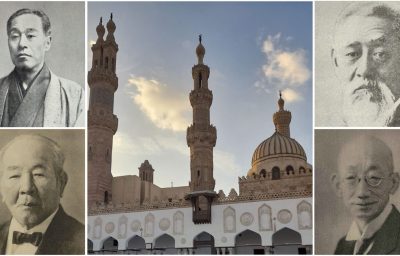COMMUNICATIONS
Reflecting on Literature through Dictation
When we think of literature being brought into being, we unconsciously imagine - do we not? – a lone author facing a sheet of paper or a computer. In fact, however, there are cases where, for physical reasons (such as writer’s cramp, paralysis in the fingers, or impaired vision), it is difficult for an author to take up a pen. Authors who have confronted such difficulties in writing have pursued their creative practice through dictation, that is, through someone converting their spoken words into written language.
Kōjutsu hikki suru bungaku: kaku koto no daikō to jendā [Dictating Literature: Proxy Writing and Gender], my first book, was published this summer by The University of Nagoya Press. It is one of very few studies to shed light on this mode of writing. My focus is on modern and contemporary Japanese literature, and my argument concerns both the writing practice of those like Tanizaki Jun’ichirō and Takeda Taijun, who actually dictated their work, and on the texts of Enchi Fumiko and Ōe Kenzaburō, who use dictation as a narrative framework for their stories. The particular problem I address is the way in which gender intersects with proxy writing. It was mostly women who did the actual writing, and so in dictation there exists a power relationship determined by a sexual asymmetry. My book takes a critical look from the perspectives of gender and care at this structure of literary production, in which the producer of the text, the individual putting words on the page, is rendered invisible, and denied the status of being worthy of praise.
Dictation, which involves entrusting the act of writing to another, is therefore a special mode of writing, quite different from the norm. Consequently, dictation allows us the possibility of reflecting anew on the production of literature which, till now, considered creativity as a universal value, and the relationship between authors and their works to be self-evident. Taking dictation as my entry point, I have sought to connect it to larger issues such as “What does it mean to write?” and “Who is the writer?” There is much that I was unable to cover adequately in this first book. In the future, I would like to continue to tease out my own questions around the relationship between writing and gender.
![Kōjutsu hikki suru bungaku: kaku koto no daikō to jendā [Dictating Literature: Proxy Writing and Gender]The University of Nagoya Press, 2023: Cover
For the cover illustration, I used “Phonation piece −ふれる/Fureru−,” a 2022 work by Hayashi Aoi (photographed by Moriya Yūki), which represents the invisible trace of the voice.](https://newsletter.nichibun.ac.jp/nichibun_nl/wp-content/uploads/2023/10/202310-m01-01.jpg)
Kōjutsu hikki suru bungaku: kaku koto no daikō to jendā [Dictating Literature: Proxy Writing and Gender]The University of Nagoya Press, 2023: Cover For the cover illustration, I used “Phonation piece −ふれる/Fureru−,” a 2022 work by Hayashi Aoi (photographed by Moriya Yūki), which represents the invisible trace of the voice.




